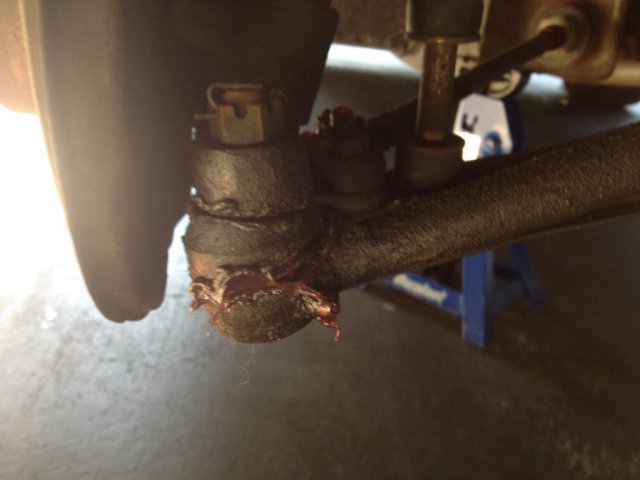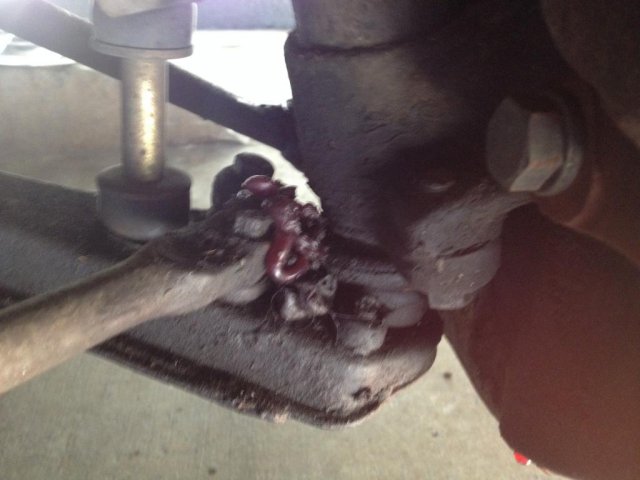-
Posts
12 -
Joined
-
Last visited
-
Days Won
1
parsethis last won the day on August 29 2015
parsethis had the most liked content!
Profile Information
-
Gender
Male
-
Location
Seattle, WA
Recent Profile Visitors
3390 profile views
parsethis's Achievements
Newbie (1/14)
1
Reputation
-

L.E.D hazard bulb issue...plz help!?
parsethis replied to jersey280's topic in S30 Series - 240z, 260z, 280z
Superbrightleds also sells plug-in flasher units that will do the job: CF12ANL-01: 2 Pin Black American Flasher Note that this particular model does not produce a clicking sound so you will not have an auditory reminder when your blinkers or hazards are on. -
Beautiful car and great build photos. I had a question about your power steering rack set-up: I assume you are using the original belt-driven power steering pump from the 5.0 to feed the Subaru steering rack. Did you add/utilize any sort of controller that adjusts pump output pressure depending on vehicle speed?
-
Hey all, Firstly, I recognize that this is ground that has been tread and re-tread within the forums, but I am not finding an answer to my specific questions in older posts and am seeking clarity from the wise. With that said: Tokico no longer makes the Illuminas (or maybe doesn't make anything anymore) and the last stock of BZ3099s and BZ3015s (originally sized for the 240Z front and AW11 MR2 rear) have evaporated from stock shelves the world over. Illuminas (especially these shorter models) seemed to be the consensus choice for a slightly lowered, slightly stiffened street S30. I have seen references in other threads that suggest that the Koni 6810s are stiffer and more appropriate for high spring rates and track/road race uses. What shocks, currently on the market, are the best match to the performance of the Tokico Illuminas? Ideally something adjustable within the stiffness range of a daily driver.
- 1 reply
-
- 240z
- suspension
-
(and 2 more)
Tagged with:
-

Which causes more damage to metal-on-metal contacts...
parsethis replied to parsethis's topic in Miscellaneous Tech
I guess what I was imagining when I asked this was, to use you arc welder analogy: Imagine you have an imperfect circuit where the contact point are not great and there is a bit of an arc. If you put an LED blinker relay "upstream" of this point the arcing is intermittent, it flashes between the points like a spark plug. If you put the same relay "downstream" of the blinker assembly the arcing IS constant, like you might see in an arc welder (if you just kept it in one place, which you wouldn't, but whatever...) The general consensus is that this was all a lot of hoopla about a very minor part of the electrical system. Everything else that I have done (refresh blinker assembly, install flasher units, install LEDs) reduces the load so drastically that I can expect regular and consistent performance from here on out. -
Gonna try sealing the expansion tank using the KBS Gas Tank sealer at the same time I do the main tank. Thanks everyone for their offers.
-
In the process of tracking down a gas fume issue I pulled my fuel vapor expansion tank and found it to be full of rust. I suspect the stamped edge seal is kaput. Timeline for getting it flashed/resealed is about a month (only one shop in the area). So... Anyone have a known good/great/excellent/new condition expansion tank. I am in Seattle and willing to pay for the unit and for shipping. Cheers.
-

Which causes more damage to metal-on-metal contacts...
parsethis replied to parsethis's topic in Miscellaneous Tech
I should have been more specific. The cost is in reference to the blinker mechanism on the column, which is where the "metal-on-metal" contact I reference in my question is. I am trying to preserve the integrity of the switch so I don't have to rebuild it (again) or buy a new one. -

Which causes more damage to metal-on-metal contacts...
parsethis replied to parsethis's topic in Miscellaneous Tech
Excellent. Thank you. -

Which causes more damage to metal-on-metal contacts...
parsethis replied to parsethis's topic in Miscellaneous Tech
I know you can use a flasher. I put it in my post. Questions I didn't see addressed in previous posts: When you use a flasher do you put it upstream or downstream of your blinker mechanism? Does this placement change the actual wear on the mechanism (which is important because they are about $500)? -
...continuous current or intermittent current? I am not talking about AC vs DC. Rather, continuous DC versus intermittent (switched) DC. The long version: I am considering changing out a lot of the wiring in my 1972 240Z to improve the electrical performance. Changes I hope to make include a high-output alternator, headlight relays, and a properly wired radio. My question concerns LED bulb upgrades for the turn signals. Because the resistance in the LED units is so low, it will cause issues for the blinker mechanism (too fast or constantly on). You can solve this problem by adding a resistor to the circuit (defeating one of the advantages of an LED unit-it's low draw) or by adding a flasher like this: https://www.superbrightleds.com/moreinfo/flashers-load-resistors/lf1-s-pin-universal-motorcycle-electronic-flasher/193/841/#/tab/Reviews Now my understanding of the flasher unit is that when the circuit is closed (when I turn the blinker mech to a "left turn" position) it moderates the output so that it is intermittent, about a half second of power, following by a half second off. The installation theory is that you could put this on the input wire (between alternator/battery and the blinker mechanism) and it would moderate the signal whether you are turning left or right. So the question is, will this intermittent pulsing be worse for the metal-to-metal electrical contacts in the blinker mechanism than constant current? The obvious follow-up is, is the current flow through the blinker mechanism already intermittent? Appreciate your thoughts on the matter.
-
Seems like a likely set of circumstances: Owner is experiencing sloppy handling and can't narrow it down, tries to make adjustments to steering rack and tightens up the play. Also applies giant wads of lube to every steering surface in the car. Results in harder steering effort at lock and doesn't solve the bearing or other suspension issues that are causing the steering issues to begin with. I'll dig around under the car this weekend to see if I can sort out what is going on. I'll update with pics when I find out. In the meantime any other advice is welcome/appreciated.
-
I may eventually go to a power steering set-up. I know there are lots of options, including Subaru power racks and electric assist columns that interface at the bulkhead. It occurred to me after I posted that the next step, diagnostically, is to take off the existing boots and see if that eases the steering. After that I may take the rack out and inspect completely.
-
Hey all, Just purchased a very nice 1972 240Z. This site has been a great resource while buying and I'm hoping you have some insight into this issue. The steering on the Z is brutish. Hard to turn at low speed, and tends to tramline at freeway speeds. The PO also says it goes through tires relatively quickly. The difficult turning isn't a problem for me, but my wife loves to drive this thing just as much as I do and I'm trying to improve it. So we are getting new tires in a smaller cross section (were due for replacement anyway) and will probably be moving to a less aggressive spring set-up (Tokico 5020s currently). In a previous thread I heard a great piece of advice: jack up the front of the car and see if the steering is easy with no tire contact. Results: Easy to turn around dead center, but increasingly difficult towards the extremes. I got under the car and had someone turn the wheel and I can see/hear the boots "wheezing" like they are under pressure from the turning. There is a ton of lube on/around/I-presume-inside the steering rack boots and it seems to be contributing to the resistance. http://imgur.com/gallery/uS2nyPg/new So questions: Is this just a feature of manual steering racks designed to center the wheel? It makes it pretty difficult to parallel park. Anyone else ever experienced this problem and, if so, what did you do to correct it? Thanks for your time/insight.



